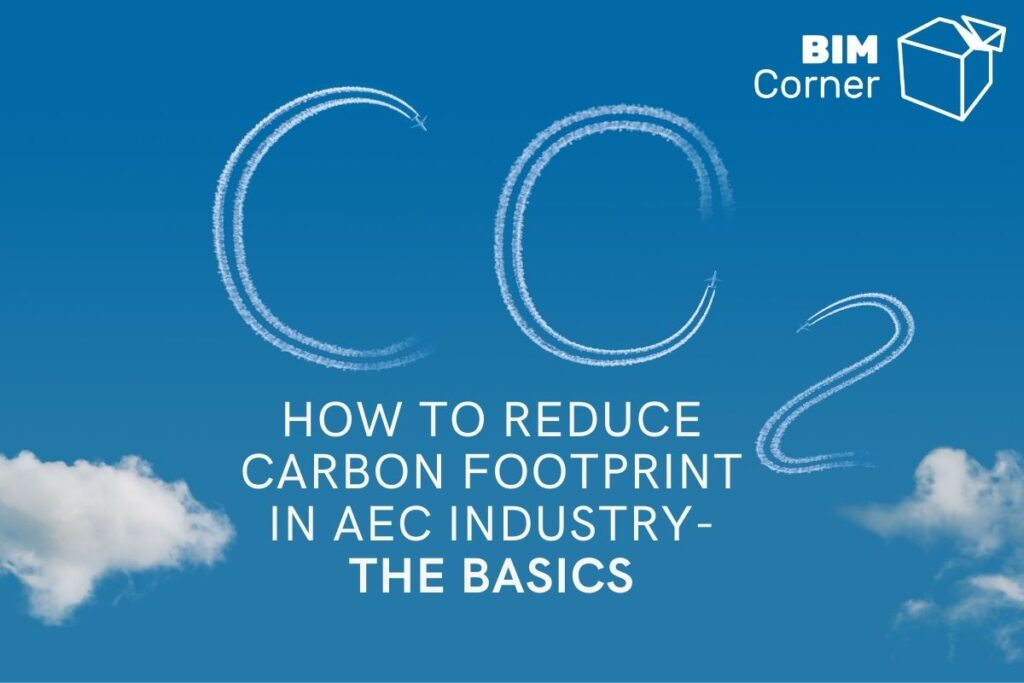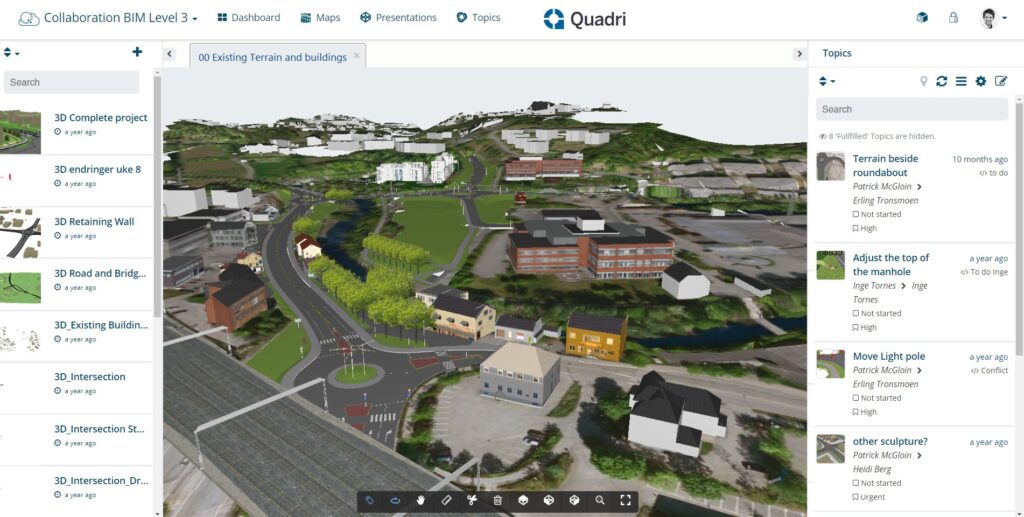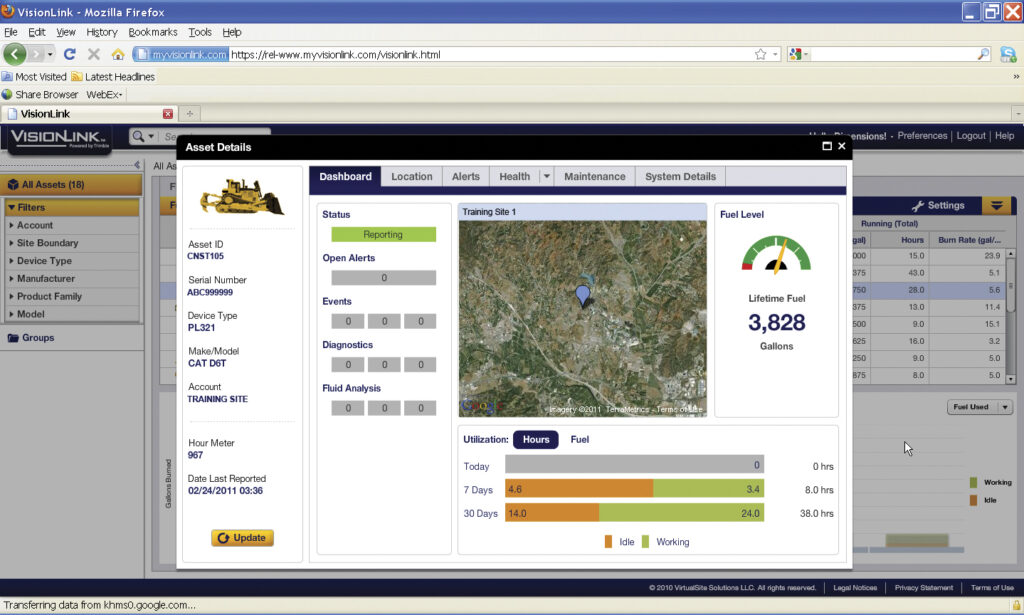The ongoing climate change has recently become the most important topic in the world. All due to the dramatic deviations from the norm and alarming levels of atmospheric pollution. This discussion also spilled over to the construction industry. The way of carrying out construction investments and what impact it has on the climate began to be considered.
In order to illustrate the level of the investment’s impact on the environment, the carbon footprint factor is used. The most frequently analyzed factor is the level of carbon dioxide emissions to the atmosphere, which is expressed in terms of the amount of CO2 per measurement unit. Most often it is m3, kg, ton, person.
Using the carbon dioxide emission factor, we can measure many activities in the construction process. Among others, the production process of building materials, transport of material to the construction site and the process of incorporating the material (heavy machinery). The sum of all variables gives us the total value of greenhouse gas emissions.
Examples of the coefficient values in other areas of the economy are as follows:
– The two-way flight route Oslo – Paris generates approx. 302 kg CO2 / person
– Truck transport produces 40 kg CO2 during a 20 km journey with cargo and back without (14 m3)
– Production, transport and installation of an energy-consuming barrier 15 kg / m emits about 35 kg of C02 into the atmosphere.
How can the construction industry contribute to reducing greenhouse gas emissions in investments?
In this text, I will present my personal thoughts on the infrastructure industry.
Route optimization
When planning a new road or rail route, economic, environmental, landscape and social factors are taken into account. More specifically, we want the new route to be safe, have a social role (e.g. connect city A with city B), be cheap to build and maintain, and have the least negative impact on the environment.
The first factor affecting carbon dioxide emissions to the atmosphere is the number of engineering structures along the route. The necessity to use bridge structures, the number of tunnels, and types of road junctions have a direct effect on increasing the amount of material. Following this line of reasoning, it can be concluded that reducing the amount of materials such as steel, concrete, asphalt, etc. reduces the amount of carbon dioxide emissions to the atmosphere. In addition, reducing the amount of construction works related to tunneling or building a facility translates directly into the carbon dioxide balance.
Another factor influencing the reduction of carbon dioxide is the optimization of soil masses. With geological expertise, it is possible to assess in which areas it is possible to reuse the extracted material, e.g. from tunnel boring or deep excavations. The right balance of earth masses and the use of earthmoving material are key to sustainable design.
It turns out that already at the investment planning stage, we are able to estimate CO2 emissions during the entire life cycle of a building. The Trimble Quantm is an example of software supporting sustainable route planning. This program allows you to plan a road route based on many parameters. Thanks to its algorithm, it calculates the route and provides key information such as cost, amount of earthworks, number of structures and the expected CO2 coefficient during construction and operation.
Optimization of building structures
Several factors influence the size and shape of bridge structures. These are, among others, the length, height, type of obstacle, type and size of the load. They are often buildings with beautiful architectural shapes that fill the newly created landscape in a special way.
For design purposes, we can use parametric modeling software. The above-mentioned variables can be described by a geometric function. For example, by using such software, we are able to dynamically change the cross-section of the bridge, perform the necessary static analysis and maximally optimize or reduce the geometry of the structure.
In addition, we also have the opportunity to consider many variants in terms of engineering and architecture. In this way, we can save material, i.e. tons of reinforcing steel and concrete, and minimize the amount of construction work.
So we can safely say that by optimizing the shape of the structure, we reduce the amount of carbon dioxide emissions that goes to the atmosphere. Sounds logical, right?
BIM contributes to the reduction of carbon emission
Nowadays, the AEC industry is lucky that there are many solutions on the market that increase work efficiency. More efficient work results in fewer errors and a faster end of the project. And the faster end of the project translates into the reduction of carbon footprint.
Another issue is the consumption of paper. Paper is present throughout the project life cycle. We plan investments on paper. We design in 3D, but in most cases we still control, coordinate and approve design solutions based on paper documentation. A lot of drawings, reports, descriptions, specifications.
So at the design stage, we can reduce the carbon footprint by reducing the amount of paper used.
Paper production is 10 tons of CO2 per ton of material.
Control, coordination and approval of subsequent stages can be carried out in the platform that supports non-drawing project management. Such a platform is, among others Trimble Quadri. Trimble Quadri has tools to support the management of BIM models. The platform enables all stakeholders to access the platform containing the BIM model. 3D views, cross-sections and communication facilitate the approval of design solutions. The control is also facilitated by the possibility of adding the revision number and status to the models.
Thus, working on the basis of the central model, we reduce the consumption of paper, which translates into lower CO2 emissions to the atmosphere.
Optimization of the materials used
With large investments, the selection of material is of great importance. It is worth considering whether there is an alternative material with similar properties with low CO2 emission factor. In addition, when selecting building materials, apart from their physical properties, it is worth analyzing how they were created and what happens to them from the moment they leave the factory until they are incorporated.
I know it sounds unusual, but let’s go over a simple example of imported materials. Cobblestones imported from China, along with transport, will be cheaper than cobblestones made in Norway, but the carbon dioxide emission factor will be 9 times higher. It is the transport of the material that adversely affects the carbon dioxide balance. It is worth starting to choose products from domestic producers.
Following this lead, it is worth paying attention, for example, whether the class of the concrete used is not overstated. Lower grades of concretes have a lower gas emission factor. In addition, more and more often producers of, for example, cement add information about the value of carbon dioxide emissions on the packaging. We want to know what the material is made of and choose it consciously.
Examples of materials that have a low gas emission factor are: low temperature asphalt, recycled steel, cellular concrete, cellular glass aggregate. These are just some of the alternative products that can be found on the market today.
Machine Control System
Appropriate organization of the construction site not only increases work efficiency, but also reduces gas emissions.
Let’s take a look at the machine control system. The use of this system has many advantages. Let us analyze the advantages that reduce gas emissions.
The machine control system allows you to monitor values such as the amount of fuel used or idle time. By optimizing these values, we can save money, but also reduce excessive gas emissions. In addition, thanks to sensors in vehicles, materials can be transported more efficiently. In this way, we will avoid transporting the material in an undercharged car.
Environmentally friendly fuel-powered vehicles or electric vehicles at construction sites are not far in the future. Access to this type of machines is more and more visible, which shows that the interest in environmentally friendly solutions is constantly growing.
PPP contracts
The last example that may have a positive impact on the reduction of CO2 emissions to the atmosphere is private-public partnership, i.e. a form of cooperation between the public and private sectors regarding the implementation of public tasks.
If we take a construction investment as an example, which includes design, construction, maintenance and management, we can assume that both parties want the project to be made in the best way, using durable elements.
It is worth emphasizing that the maintenance and management phase is the longest in the entire life cycle of the investment. Thus, an appropriate approach to the investment may cause, among others, that the number of repair works will decrease, which will lower carbon dioxide emissions.
Summary
You can see that there are many factors that can reduce CO2 emissions. Of course, BIM technology contributes greatly to this. At the design stage, we are able to optimize solutions, select materials and plan how the construction will be carried out.
In this article, I dealt with the subject of carbon footprint in construction projects in a very basic way. Hope you got something out of this article. Let me know if you want me to develop this topic.
At the end I can say that a little bit of action each day will reduce pollution in the long run.













